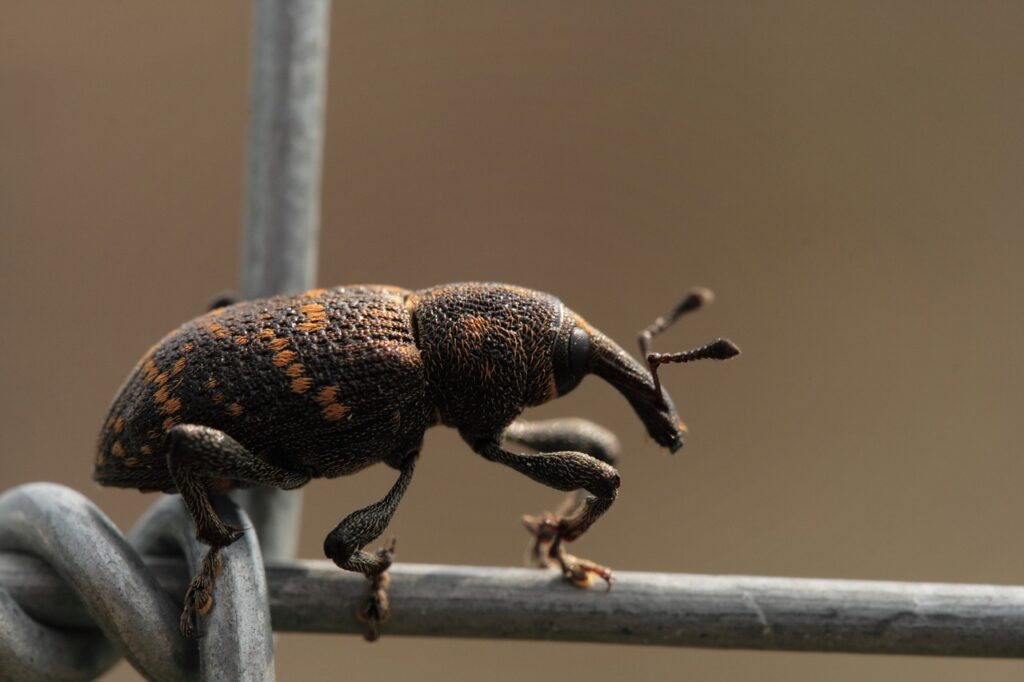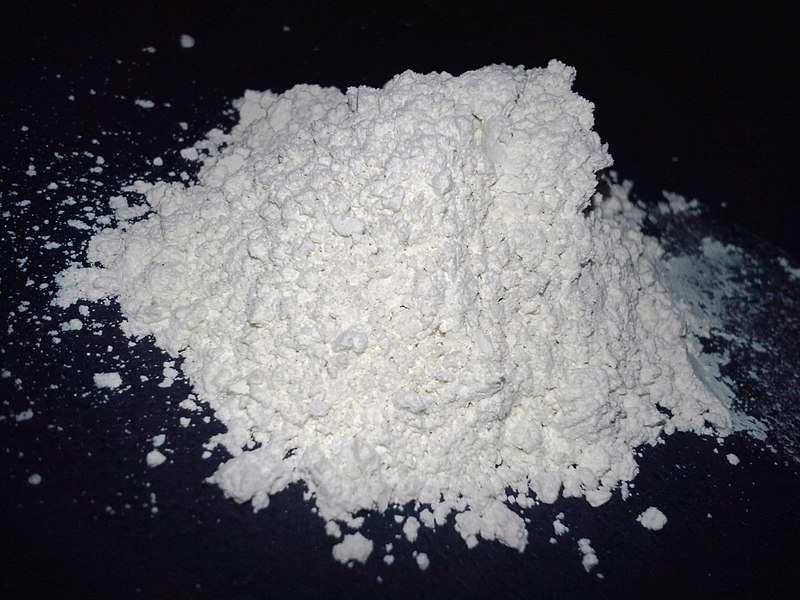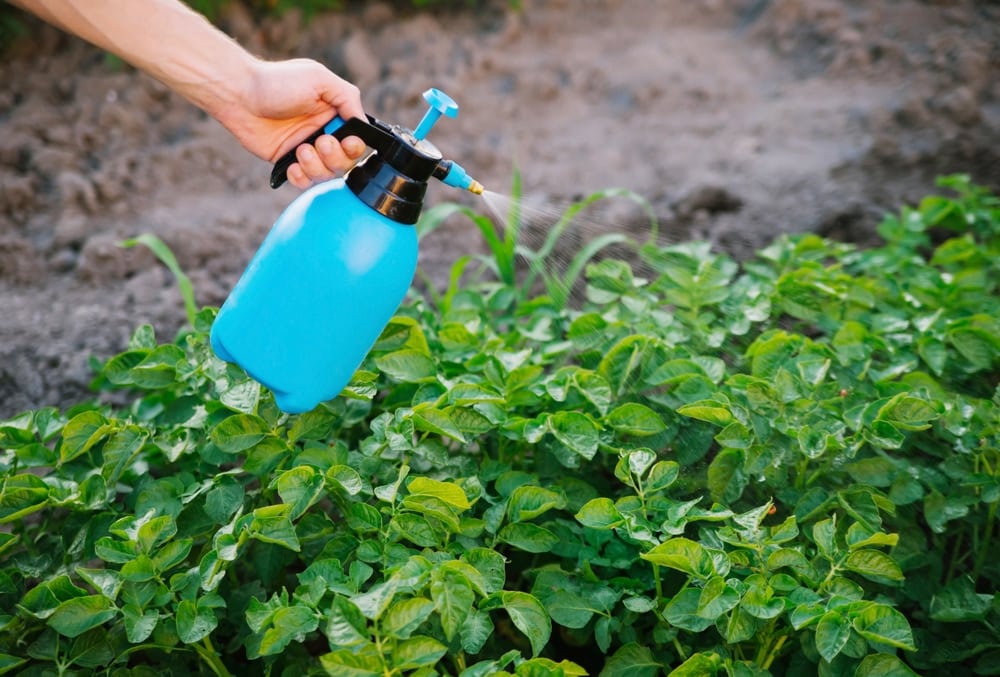How to Get Rid of Weevils in Your Garden: 7 Methods That Work
-
Lindsey Lawson
- Last updated:

Weevils are a type of beetle that are considered pests both indoors and outdoors. These critters will feast on both the roots and foliage of most garden plants, so it’s no wonder that gardeners prefer to steer completely clear of weevils altogether and could use some tips on how to keep them under control. If you have found yourself needing to get rid of weevils fast, there are some methods you can turn to help solve your problem.

The 7 Methods for Getting Rid of Weevils in Your Garden
1. Diatomaceous Earth

One of the easiest, most natural, and most effective ways to get rid of weevils and other garden pests is to use Diatomaceous Earth. Diatomaceous earth is made from the fossilized remains of small, aquatic organisms called diatoms. time, diatoms accumulated in the sediment of rivers, streams, lakes, and oceans.
The skeletons of these diatoms are made of silica, which is mined from the sediment and ground into a fine powder. Diatomaceous earth is not toxic and does not have to be consumed to be effective against weevils or other pests. It acts by destroying the exoskeleton by drying it out and absorbing all the oils and fats.
Diatomaceous earth products are easy to find and registered by the EPA for use against bed bugs, cockroaches, crickets, fleas, ticks, spiders, and many other pests. To combat weevils, you need to apply it to the soil surrounding your garden plants to act as a protective barrier.
The downside to diatomaceous earth is that it does not discriminate between pests and essential pollinators. Reapplication is necessary after rainfall or regular watering though because diatomaceous earth does not work once it becomes wet. It is also susceptible to blowing away under heavy winds
- Natural and effective
- Non-toxic
- Controls a wide variety of garden pests
- Does not work when wet
- Must be reapplied after rain or watering
2. Crop Rotation
Crop rotation has many benefits including improved soil health and fertility, increased nutrient availability for the plants, reduction of erosion, and ridding of weevil infestations. If the same plants are grown in a particular spot year after year, it leaves them much more susceptible to a weevil infestation.
Weevils are particularly drawn to leafy vegetables and fruit-bearing plants so try rotating these out and growing plants in their place that are much less weevil-friendly such as mint, chamomile, garlic, or bay leaves. When you begin digging up for the rotation, be sure to check for eggs and larvae that need to be removed.
While there are many advantages to crop rotation, it does take some skill and knowledge of the plants you plan on rotating. You need to factor in what each plant needs to thrive so that you can provide them with the optimal environment to grow properly.
You will need a wider, more diverse crop variety which can cost more upfront. Crop rotation does take some extra time too, but the benefits are worth it if you have the know-how and are confident in your ability to do so successfully.
- Increases soil health and fertility
- Increases nutrient availability for plants
- Increased crop yield
- Reduces erosion
- Requires knowledge and skill
- Requires diverse plants
- Requires extra time
- More costly
3. Pheromone Traps
Another way to rid your garden of weevils is by luring them into pheromone traps. These pheromones mimic the natural scent produced by weevils and will trigger them to be lured right into the trap.
Since there are different types of weevils, you will want to correctly identify the types of weevils you are dealing with in your garden and ensure the particular trap is appropriate to the species.
It is best to place these traps as close to the main cluster of weevils as possible to attract them in large numbers. These traps are safe, effective, and specifically target weevils. Those that are worried about garden aesthetics may be concerned that the trap is a bit of an eyesore, but it is well worth it if it gets the job done.
These traps will need to be replaced as needed and they usually don’t resolve the entire infestation so it’s best to use them in conjunction with other methods.
- Specifically targets weevils
- Safe and effective
- Some may consider it an eyesore
- Will need replacing as necessary
- Will not eliminate the infestation entirely
4. Manual Removal
You do have the option to remove the weevils manually but since they are nocturnal, you will have to do so at night. You will need to gather a bright flashlight, gloves, a container filled with soapy water, and a piece of cardboard or newspaper.
Once you locate the weevils, place the cardboard under the affected plant, grab hold of the stem and shake the plant to get them to fall off onto the cardboard. Use your gloves to gather up any remaining weevils and any eggs or larvae and dump everything you have collected into the soapy water.
You need to be thorough with this method and then utilize some preventative measures to keep them from coming back. You can do this on your own or you can opt to have a professional come out and perform manual removal.
- Safe and effective
- Easy process
- Time-consuming
5. Biological Control
Biological control of weevils utilizes beneficial nematodes as a way to keep weevils at bay and is a great alternative to chemical treatments. Nematodes are microscopic creatures that are parasitic on other insects.
The nematodes should be introduced into gardens from early spring through fall and are commercially available online and at local garden centers. They will only target the soil-dwelling larvae and pupae, however, and will not target those feeding on the leaves. They burrow down up to 7 inches into the soil and are great at targeting garden pests.
With nematodes, you will have to manually remove any remaining weevils from the plant itself and dispose of them properly. This is an all-natural, organic way to remove weevils and other pests that is safe for your plants, pets, and humans.
- Safe for plants, animals, and people
- Commercially available
- Natural and organic removal of weevils and other pests from soil
- Only works on soil-dwelling pests
6. Burlap
Burlap is a safe, effective, and inexpensive way to protect your plants from weevils by placing burlap bags on the ground near the trunk beneath the affected plants or wrapping burlap strips securely around the basal trunk.
Weevils become easily trapped in burlap material when they are searching for a place to hide during the day. Check the burlap as often as you need and dispose of the trapped weevils accordingly. You can reuse the burlap so make sure to remove all weevils before placing it back down.
This is not a sure-fire way to rid your entire garden of weevils and you do not want to allow your plants to become severely damaged, so it’s recommended that you utilize manual removal as needed as well as some preventative measures.
- Safe and easy
- Cost friendly
- Reusable
- May not remove all weevils
7. Chemical Treatment

Severe weevil infestations may require harsher methods for the full elimination of the pests. Most gardeners only use chemical treatments as a last resort since these chemicals are placed on or near their plants, which are often consumed.
If you must resort to using chemical treatment, you need to ensure the product you are using is approved by the Environmental Protection Agency. Most chemical pesticides are used on the plant’s foliage, but you must follow the specific manufacturer’s instructions thoroughly for the proper application.
You want to ensure your safety during the process and that of your garden as a whole. Those that use chemical pesticides to remove weevils must wash their plants throughout before they are consumed.
- Eliminates weevil infestations
- Potential health effects from insecticides
- Risk of chemical plant injury
- Must thoroughly wash plants before consumption

Extra Tips on Keeping Weevils Out of Your Garden
Now that you are aware of the different ways to combat and remove weevil infestation from the garden, we’ll provide you with some extra tips on preventing them from coming back and other methods that can help you maintain control.
Encourage Safe Predators
One way to prevent weevils from becoming a problem is by encouraging their natural predators to keep them at bay. Weevils fall victim to many different kinds of predators but you want to encourage the ones that are safe for your garden and overall environment.
Some of the best predators to keep around are praying mantis, warblers, frogs, ladybugs, chickens, and backyard birds. Except for chickens, none of these other predators will cause any harm to your garden. Chickens may wander around feasting on pests and other insects but they may gravitate toward certain crops, so chickens must be supervised around the plants they like to eat.
Keep Weeds Under Control
Certain weeds may attract weevils and provide them with a favorable habitat. Weeds like dandelion, capeweed, sorrels, and docks are common host plants of weevils so you will want to make sure you pull them from your garden area and eradicate them entirely.
If you already have an infestation and you notice weeds, get them cleaned up as you work to eliminate the weevils. Keep up with regular weeding as a preventative measure along with other
Clean Up Debris
When weevils are not feasting on garden plants, they spend their time hiding away. They will gravitate toward anything that will provide them security so make sure you remove any debris such as leaves, twigs, dead plants, or any other objects that provide them a place to hide.
Bay Leaves
Weevils may be deterred by certain strong-smelling herbs like bay leaves. These plants have a pungent smell and a very bitter taste that typically repel weevils and other insects. You can even look into making your own natural insect repellents by using bay leaves and other essential oils to help prevent weevils or even as an attempt to get control of a current infestation.

Conclusion
Weevils can wreak havoc on your garden plants, but there are several ways to get rid of them. Whether you’re looking for a natural way or are okay with using chemicals, hopefully these tips will help you rid your garden of weevils once and for all.
Featured Image Credit: Siegella, Pixabay
Contents
